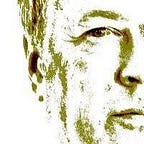Fiat and Crypto Are Staggeringly Different: Part 1
People earn money, buy stuff with it, and squirrel it away under a mattress. but understand very little about its nature.
This collection of postings (labeled Part 1, 2, etc.) hopes to change that. It provides a stepwise introduction to both money and cryptocurrency. It is also published as a Medium series (for mobile phone readers).
Let’s Begin With A Mild Dose of History
The alternative to money is barter, and when money fails — as it does in situations of hyperinflation (caused by moronic politicians believing you can print mountains of money without consequences) — barter takes over.
Then people have to find ways of swapping goods and services with each other and it’s complicated. The problem is that without money there is no unit of measure for value. You know this already.
You have an inner psychic mechanism that assigns value to things based on the currency you are familiar with: Dollars in the US, Balboas in Panama, Quetzals in Guatemala, and Dongs in Vietnam.
Try changing country. If you’ve ever done that, you’ll know its hard to adjust your sense of value, because costs are different, taxation varies, trade barriers exist and different (cultural) values predominate.
Small tribal communities of hunter-gatherers can survive without money by sharing everything according to some established order, but this doesn’t scale well. Even in tribal societies that use barter, usually a “unit of value” emerges. This happens so naturally that some academics claim there are no pure barter economies.
The measure of value
The prime function of a currency, then, aside from payment is to provide a stable unit of value. Effective currencies are difficult to invent because people cheat (see People Can’t Be Trusted. That’s Why The Blockchain Will Change The World). A good currency needs to be cheat-proof.
Many things have been tried as currencies, including:
- food (Salt, from which comes the word “salary.” Also cocoa beans, turmeric spice wrapped in coconut fibers. And incidentally, Parmigiano Reggiano and Parma Ham are still used as collateral at some Italian banks)
- cowries (she hoards sea shells by the seashore).
- cigarettes (see What Is A Crypto Currency Anyway?).
- coins — bronze, silver and gold.
- hard to forge paper portraits of presidents with numbers on them.
- electronic records attached to a blockchain, using cryptography
And Now Something Different: What is a Reserve Currency?
I agree with Brain Armstrong (CEO of Coinbase) that a cryptocurrency will eventually become the world’s reserve currency. To think about what that means you need to know what a reserve currency is.
A reserve currency (sometimes called an anchor currency) is a currency is used in international transactions and hence a currency that is “global.”
There needs to be a unit of value to price internationally traded commodities (oil, copper, tin, wheat, cocoa, etc.). Right now, US dollar is that unit.
The only other significant reserve currencies are the Euro, the Japanese Yen and the British Pound. The dollar dominates (estimates suggest 62% of foreign reserves held in dollars, 20% held in Euros, with the Pound and the Yen at about 5%).
The human need to price things ensures that one reserve currency dominates. At the moment, it is the US Dollar. Before that, it was the Pound
Is there an advantage to being a reserve currency?
For a country, yes. Right now all nations (and most international businesses) hold copious quantities of dollars. The US gets to print them and other countries have to buy them. This enables the US to run a much bigger balance of payments deficit than any other country. A persistent balance of payments deficit in other countries soon impacts the value of their currency.
Since the end of WWII, the US has leveraged this to boost the US standard of living. The downside is that the US has built up substantial debt. In 1985, it ceased being a net creditor nation and became a net debtor nation — and the debt grew like bamboo in spring.
Everyone else was helping to finance the US standard of living.
Yes, it will, at some point. When those US dollars get homesick and fly back to the US, they will inflate the stateside supply of US dollars, which will, in turn, drive up prices. The natives will surely become restless.
Click here for the next post in this series
Robin Bloor Ph D. is the Technology Evangelist for Permission.io, author of The “Common Sense” of Crypto Currency, cofounder of The Bloor Group and webmaster of TheDataRightsofMan.com.
